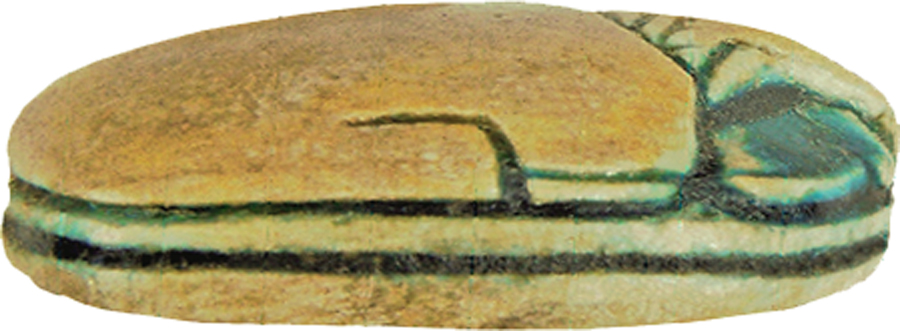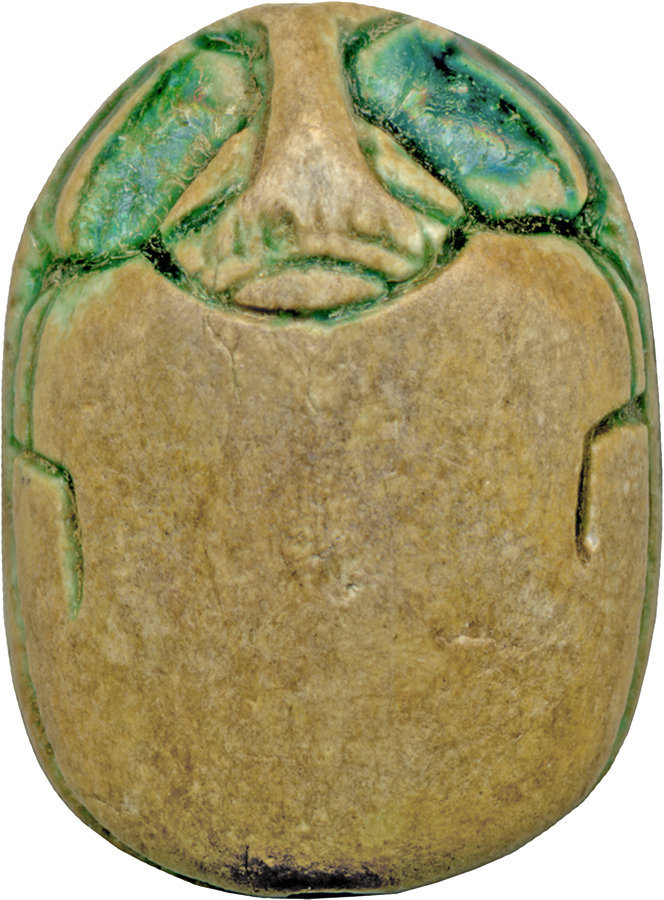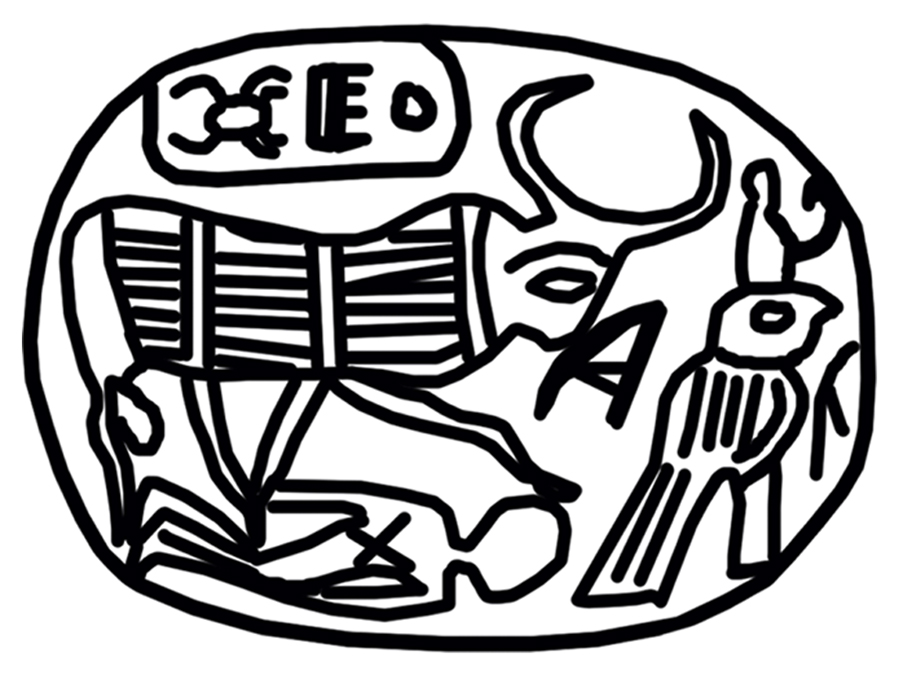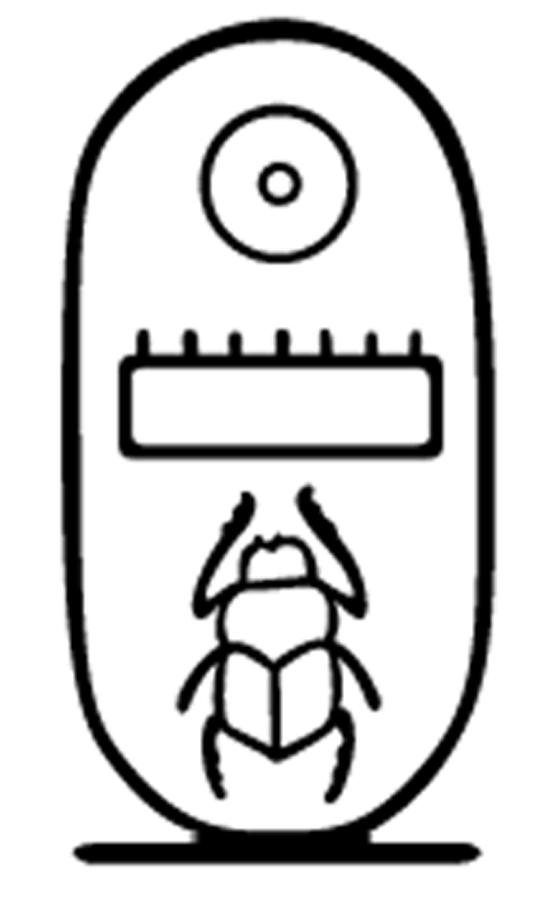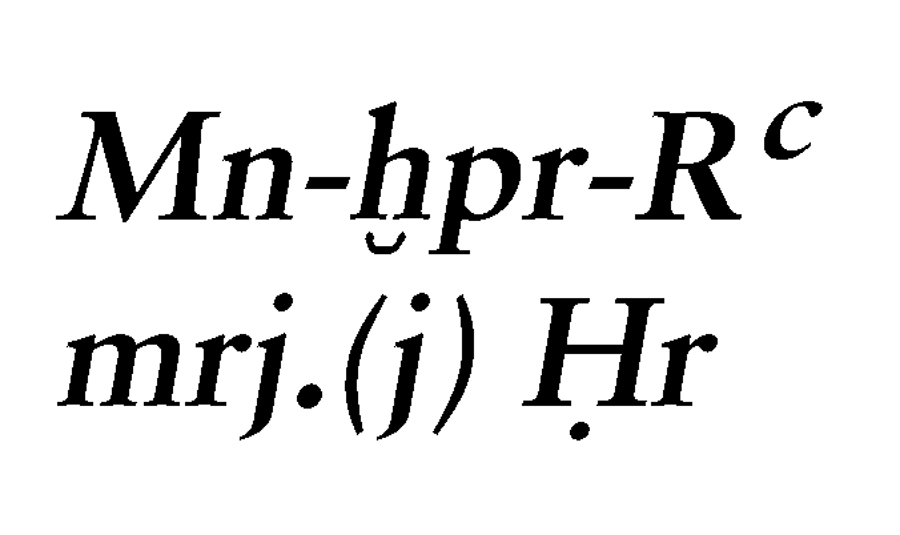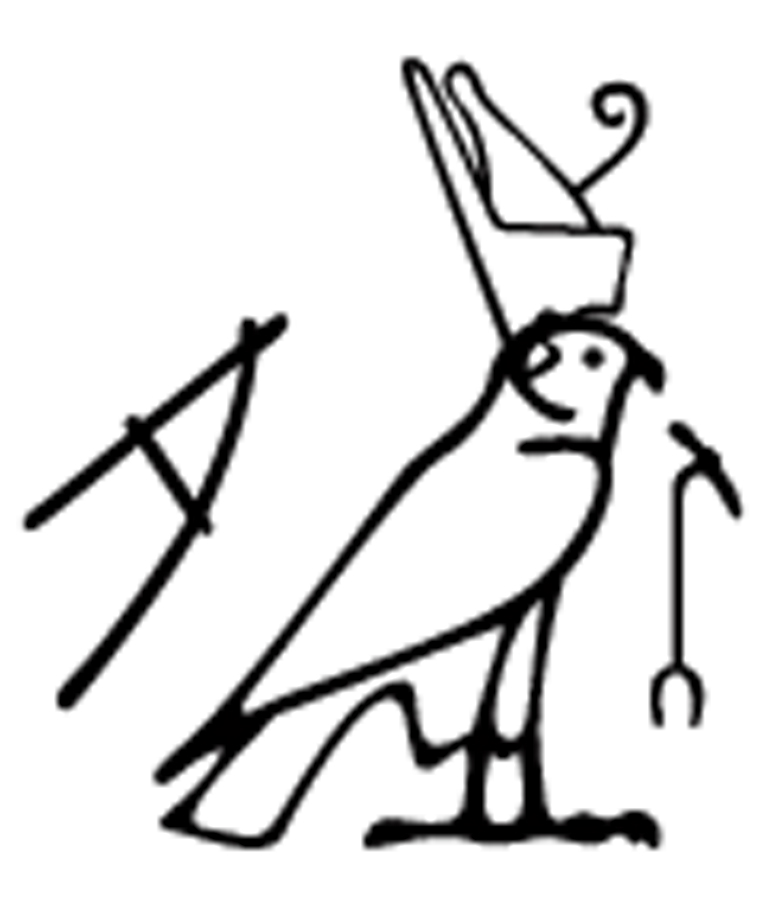Scarab with King as Bull Motif
(Ancient Egypt and Nubia )
In addition to its original function as a personal seal, the scarab became one of the most powerful amulets, used by the living and entombed with the dead. Countless variations have been preserved, differing in design, size, and material, but always associated with eternity and regeneration.
This scarab has a very special bottom design displaying the king as a bull trampling over a prone enemy, with the script sign of a hoe in front of the bull's head. A Horus hawk wearing the double-crown (of Upper and Lower Egypt) is displayed in front of the bull, and the cartouche with the throne-name of the king is above his back. Such an amulet should secure the divine, victorious power of the king, as well as royal authority. It provides its owner with royal patronage and protection.
Inscription
Provenance
Provenance (from the French provenir, 'to come from/forth') is the chronology of the ownership, custody, or location of a historical object. Learn more about provenance at the Walters.
Henry Walters, Baltimore [date and mode of acquisition unknown]; Walters Art Museum, 1931, by bequest.
Exhibitions
| 2006-2007 | Daily Magic in Ancient Egypt. The Walters Art Museum, Baltimore. |
Geographies
Egypt (Place of Origin)
Measurements
H: 1/4 x W: 9/16 x L: 3/4 in. (0.7 x 1.4 x 1.9 cm)
Credit Line
Acquired by Henry Walters, 1929
Location in Museum
Not on view
Accession Number
In libraries, galleries, museums, and archives, an accession number is a unique identifier assigned to each object in the collection.
In libraries, galleries, museums, and archives, an accession number is a unique identifier assigned to each object in the collection.
42.76


